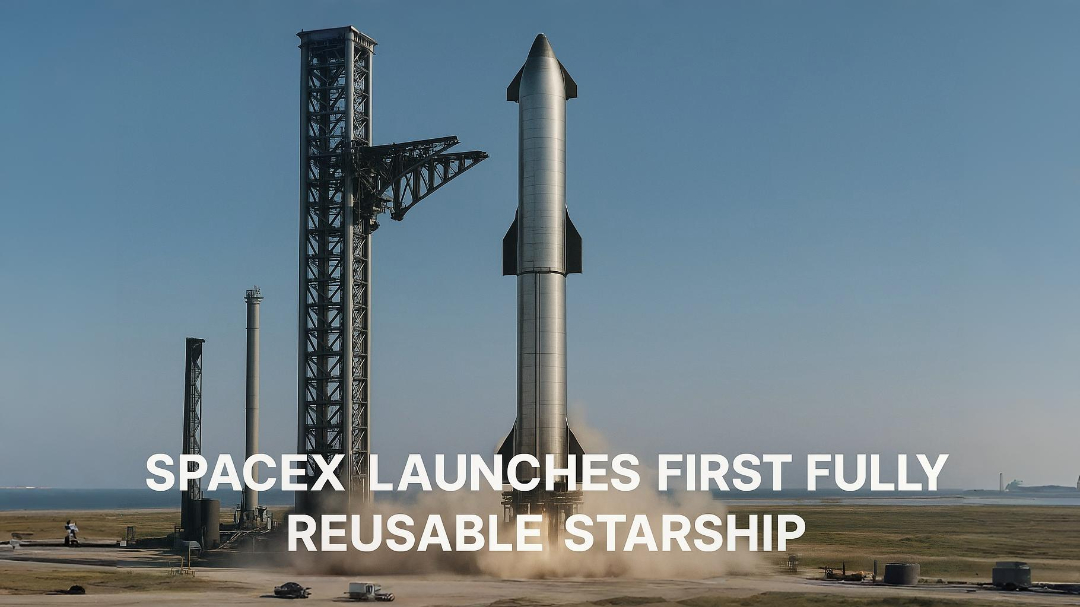
Spacex successfully launches the first totally reusable spacecraft
Spacex has achieved a historical milestone with the successful launch and recovery of its first system of ship ships of additional ship completely reusable. The launch marked the first time that the two -stage vehicle, which includes super heavy reinforcement and Starship spacecraft, completed a complete take -off flight to Splashdown and both stages recovered. This monumental event brings Spacex to its goal of creating a completely and quickly reusable rocket capable of transporting the crew and load to the Earth's orbit, the moon, Mars and beyond.
The test flight demonstrated significant advancements: the Super Heavy booster executed a controlled landing in the Gulf of Mexico shortly after liftoff, and the Starship upper stage traveled halfway around the globe before making a controlled splashdown in the Indian Ocean. Despite enduring extreme conditions during re-entry, Starship survived with minor damage, proving its robust design. SpaceX founder Elon Musk expressed enthusiasm, highlighting the flight as a major step towards making humanity a spacefaring civilization and enabling future missions beyond Earth.
How the Successful Starship Launch Advances Space Exploration
This projection represents the crucial steps of a comprehensive SpaceX scheme to revolutionize space trips, which drastically reduces launch costs through total reuse. Fast re-use of the system is expected to allow frequent and affordable missions, including the NASA Artemis program, which is intended to send astronauts to the moon using the type of spaceship. Long-term schemes include a humanitarian mission to Mars and establishing a moon base and a Martian base.
Starship stands taller than the Saturn V rocket at approximately 120 meters and is powered by SpaceX's new Raptor engines burning liquid methane and liquid oxygen. The two-stage system is designed for vertical landings of both booster and spacecraft to allow swift refurbishment and reuse. The successful test flight proves the concept's viability and provides critical data to improve future launches. NASA Administrator Bill Nelson congratulated SpaceX on the achievement, emphasizing its importance for lunar and Martian exploration.
The success follows three previous attempts that ended prematurely due to explosions or structural failures. SpaceX continues to refine thermal protection and pressure systems to fully realize a heat shield and fire suppression improvements for future flights. The company expects to conduct more frequent test launches with the goal of operationalizing Starship as an economical and reliable space transportation system in the coming years.
This breakthrough solidifies SpaceX’s position as a pioneering force in the new era of reusable rocketry and deep space exploration.